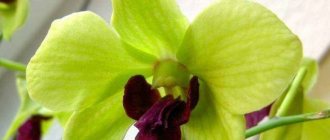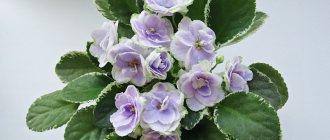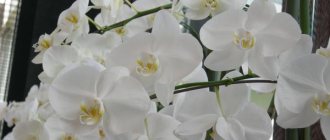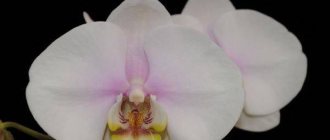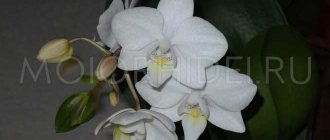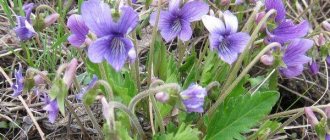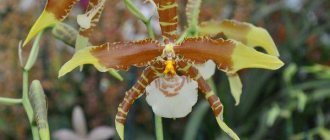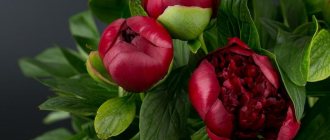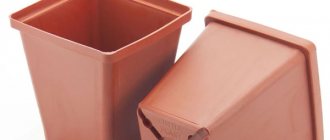Features of care
Violets prefer light, which plays a huge role during flowering. It is also not recommended to keep the plant in direct sunlight. Particular attention should be paid to watering the plant, since due to severe waterlogging of the soil, the roots begin to rot, as a result of which the violet dies. All violets need high humidity, but spraying is not recommended for this, as this procedure leads to the formation of spots on the leaves.
Violets are heat-loving indoor crops; they are best grown at air temperatures from 16 to 21 degrees above zero. Fertilizers are applied no more than once every 4 weeks.
Violet, description and photo RS-Green Lagoon (S. Repkina)
Violets from breeders of the CIS countries - “Z” (RS).
RS -Green Lagoon (S. Repkina).
RS-Green Lagoon, RS-Zelenaya Laguna (S. Repkina).
Large, double, fringed white flowers with blue streaks and greenish outer petals.
Light green wavy foliage. Standard. It’s impossible to fight the rosette; it constantly lifts the leaves up, both on the windowsill and on the shelf. This is a varietal feature that cannot be corrected. But it’s still better to keep it on the windowsill.
Rose flowers with green and blue borders. If it’s hot, there’s not enough green, but there’s more blue, and vice versa when it’s cool. The flowers take a very long time to bloom, longer than usual, about two weeks. Such delicate heads of cabbage in a green shirt are captivating. Some never fully open, darken and dry out.
The first flowers are larger, then smaller. This variety has long peduncles. The flowers turn out very heavy. If the rosette becomes flat, the flower stalks would fall around and the bouquet would fall apart. And so - they are held in a bouquet, supported by leaves. Then the heavy flowers lie on the leaves and slightly straighten them.
It does not bloom very often, there are usually few flower stalks, 4-5 pieces, but due to the fact that the flowers are very large, the bouquet seems large. But the centers of the first flowers began to turn brown, dry out quickly, and they all don’t have time to bloom properly. The flowers do not open fully, and at some stage they begin to fade. The flowers are still in good condition, but the petals inside are starting to dry out, and it looks like old cabbage.
The variety is leisurely, grows slowly, blooms in 1.5-2 years. With age, it blooms darker and darker each time, so it has to be renewed. It turns out a dark lilac sport.
Lagoon (Italian lake) is a shallow body of water separated from the sea by a narrow strip of washed-up sand (bar) or coral reefs. Due to their protection, lagoons are often unique natural biotopes. They serve as a shelter for aquatic birds, fish and animals.
Do you know that…?
Variety - plant (French sorte, from Latin sors - variety, type), cultivator, a set of plants created as a result of selection and possessing certain morphological, physiological, economic characteristics and properties that are inherited; the lowest classification unit for cultivated plants. There are such rosettes on which both varietal and single-color flowers bloom at the same time, this is very attractive, but you need to know that this violet inevitably goes into sport.
To reduce the likelihood of “sporting” when rooting leaf cuttings and growing young rosettes, it is important to create optimal conditions (constant temperature 24ºC, high humidity, pH 6.5), and also refuse to use fertilizers and growth stimulants. In addition, it is necessary to obtain as many offspring as possible.
Before you buy the violets listed below, carefully read the forums about their behavior on the windowsill. Many of them are very beautiful flowers. However, these can be large rosettes with large and fragile leaves, with leaves rising up or hugging the pot, forming many stepsons that interfere with the formation of a neat rosette, pulling the stem up and growing into a Christmas tree, bending the trunk, rare flowering with long breaks, fallen flowers or they last little and quickly wither, very long and recumbent peduncles, the color of the flower fades quickly, they do not like bright lighting on the windowsill, they are afraid of the slightest drying out or waterlogging, a large percentage of them go into sports or darken the flower.
Are they suitable for your window sill and the conditions that you can create for them? You will look at the flowers for several months, and the rosette will always be in front of your eyes. There are many beautiful flowers, there are much fewer beautiful and neat rosettes, look first at the rosette! Search and you may find a dozen violets with the same flower color if you are not interested in the smallest details as a collector.
• — Funny Clown (Repkina); • — Little Bunny (Repkina);
Choosing soil and pot
To grow violets, use a small pot to prevent the root system from growing too large. Otherwise, the roots will take all the strength from the flower, and the violet will not bloom. Soil for indoor culture must be used ready-made, which can be purchased at any flower shop. However, experienced gardeners can prepare the soil mixture themselves, using coniferous, turf, peat or leaf soil, to which raising agents are added, for example, perlite, sand, chopped sphagnum moss, vermiculite. When planting a plant, it is imperative to put a layer of drainage on the bottom of the pot. For this you can use broken bricks, expanded clay, and pebbles.
Green Lagoon description and characteristics
This variety was developed thanks to the work of breeder Repkin S.
The rosette of the plant is dense and of standard size, assembled from neat wavy leaves of light green color. Terry flowers, which in their shape resemble cabbage forks, are considered large; their size can exceed 6 centimeters in diameter.
The petals located on the outer edge of the flower have a greenish tint, while the base is white. Blue streaks are visible on the surface of the petals. The shades of flowers become darker with each flowering and if the plant is not rejuvenated, then after several years the flowers will acquire a dark purple color. Flowering in this species on E is frequent, but lasts for a long period of time.
The green lagoon, as a rule, grows from 4 to 5 flowering shoots, on which large flowers appear during flowering. Those that appear during the first flowering are larger in size than those that will appear in the future. The first flowering should be expected two years after the flower was planted. If the weather is hot outside, then blue shades will predominate; if it is cool, then green shades will prevail.
The variety has an interesting feature: its leaves grow in an upward direction. They serve as support for heavy buds growing on weak flowering shoots, preventing the bouquet from falling apart.
The green lagoon is prone to diseases that lead to the rotting of the rosette itself or the drying out of the buds from the inside and they do not even have time to open.
Transfer
How to properly replant a violet? Please note that this plant is replanted at least once a year. The main reason is the reduction in leaf size due to the fact that the crop grows and becomes very crowded. As the violet grows, it forms new side rosettes, which should be separated from the main bush. Thanks to this, you can provide the plant with better flowering.
During transplantation, the bare part of the stem should not be more than 6 cm. In this case, the new pot is used one size larger than the old one.
Description of varieties and photos
"Elixir of Beauty"
The rosette of this variety is neat, variegated with white and pink bordering . The flowers are large and delicate, white with soft pink markings and a darker halo on the ruffled petals. Up to five buds are formed on the peduncle.
Depending on the conditions in which the inflorescences were formed, the color of the petals can vary significantly. The hotter and drier the climate, the more pink the petals are. In cold weather, the flowers are almost white, with rare splashes of pale pink.
"Refined taste"
The rosette is medium-sized (about 30 cm) light green in color. The flowers are very large (up to 7 cm), simple and semi-double, wavy along the edge of the petals. The color of the buds is white, with soft peach prints. The peduncles are long and powerful, each with 4-5 buds. The cap is spreading, which allows you to see and examine each flower. The variety has a long flowering period. The lifespan of each flower is at least 6 weeks .
“RS-Refined Taste” is easy to care for. It feels good both on the windowsill and when grown on shelves with additional lighting. When propagated by leaves, it transmits its varietal qualities well. It takes root easily and produces a large number of children.
The first violet flowering occurs 7-8 months after planting . As they fade, the old buds are removed. If the buds were formed at elevated temperatures, the petals will be pink; at lower temperatures, they will be almost white, with pale pink imprints.
Variety selection 2009. The rosette is small, with upright cuttings. The leaf is large, hard, slightly wavy along the edge, so it seems like there are a lot of them. The flowers are simple, semi-double, very large. The color of the petals is dark purple. The edges are very wavy, curly, several shades lighter than the petal itself.
Reproduction methods
There are several methods for propagating indoor violets. However, the leaf propagation method is most often used for this purpose. As a rule, it is carried out in summer and spring.
To do this, you need to choose a healthy leaf from a bush that is not damaged by diseases or insects. It is best to choose a sheet from the 3rd or 2nd row. You can separate the propagation leaf from the bush by cutting or breaking off. However, the cutting method would be more acceptable. Then the leaf is rooted. This procedure can also be carried out using several methods. To do this, the leaf can be placed in water for rooting, and also stuck into the ground. When it has roots, it should be transplanted to a permanent place in a separate pot.
Comments
Olya, there are no words, I froze for a moment, what a beauty. I’ll definitely start one too, I’ll write the name down in my diary right away.
- Login or register to post comments
It feels like painted rose buds have been tied to the violet leaves. Very beautiful, unusual! Wonderful variety! I'll definitely be looking for it in the catalog in the spring!
- Login or register to post comments
- Login or register to post comments
Olya, amazing beauty. What a combination of depth of color and shape! This is simply a miracle of selection. As soon as it appears in the catalog I will immediately order it.
- Login or register to post comments
Yes, but there are no words.
- Login or register to post comments
It looks like the variety has swam or sported. There's too much blue, it should be white.
Here is a description of the variety from Svetlana Repkina:
Flower: Large, double, fringed white flowers with blue streaks and greenish outer petals. Rosette: Light green wavy foliage.
- Login or register to post comments
I’m not sure yet that I’ve got the right variety! My leaves are dark. When I purchased this variety, the leaf was also dark. I will watch, but most likely sports.
- Login or register to post comments
Yes, Ol, this is a sport, unfortunately. I have the same. Mine has now budded and is getting ready to open. I was upset, it was already clear that he would not be white, but when I looked at yours, my mood noticeably improved. Very beautiful, like a rose!
- Login or register to post comments
Even if he sometimes floats, I still liked him. The shape of the flower is very interesting.
- Login or register to post comments
Girls, thank you all for your comments! I'm glad you liked the variety too!
- Login or register to post comments
Olya, even if it’s a sport, it’s great. Interesting flower shape. The rosette is neat.
Possible diseases and pests
Even if you follow all the features of violet care, insects and diseases can overtake it unexpectedly. The most common diseases among indoor Saintpaulias are the following:
- Rotting of the socket, the cause of which in most cases is waterlogging.
- Late blight. Violets suffer from late blight in most cases due to excess air humidity, as well as due to infrequent ventilation of the room.
- Gray rot. This disease develops, as a rule, at low indoor temperatures, below 16 degrees, and also with abundant watering.
Powdery mildew. Powdery mildew can be identified by the presence of small whitish spots that form on the upper side of the leaf. The reasons for the development of the disease are stagnant, humid air, as well as a sharp change in air temperature.
As for pests, most often this indoor crop is attacked by mealybugs, aphids, and spider mites. In most cases, this occurs due to the air being too dry or humid. Therefore, it is so important to monitor this indicator when growing violets at home.
Take into account
Before purchasing violets of the “green lagoon” variety, you need to carefully familiarize yourself with their breeding characteristics at home. Of course, in appearance they are quite beautiful flowers, but it is quite difficult for inexperienced gardeners to achieve abundant and lush flowering. Due to improper care, large rosettes with large and fragile leaves may form, with the foliage rising upward or hugging the pot, stepsons may also appear that will interfere with the formation of a proper rosette, the trunk may stretch upward and grow into a Christmas tree.
Many also often encounter rare flowering, which occurs with long intervals. In this case, the flowers stay on the bush for a short amount of time, wither quickly, and have recumbent or very long peduncles. Improper care can also cause the color to fade quickly, so you should not expose violets to direct sunlight on the windowsill. Also, these crops are afraid of the slightest waterlogging or drying out.
That is why, before purchasing a violet of the “green lagoon” variety, be sure to ask yourself whether you can provide proper care for this plant.
With proper care of your indoor plant, it will delight you with wonderful flowers, and flowering will occur frequently.
Photo and description of the violet variety “Green Lagoon”
This plant, as mentioned earlier, has an unusual color. The outer petals of the green lagoon violet have a greenish tint, their main color is white. The petals have streaks of a bluish tint. The shape of the green lagoon violet flower is also very unusual; in appearance it is somewhat similar to cabbage forks. However, gardeners often complain that the flowers begin to darken with subsequent blooms. If the plant is not renewed, it will eventually form a dark purple variety.
You should also pay attention to the fact that the “green lagoon” violet, the photo of which is presented in this article, blooms infrequently. However, this disadvantage is compensated by prolonged flowering.
When looking at the photo and description of the “green lagoon” violet, it is imperative to mention that the plant produces from 4 to 5 peduncles, on which large flowers are formed. The first ones are the largest, and the subsequent ones can be smaller.
What else can be said about the description of the violet variety “green lagoon”? This plant blooms for the first time approximately 2 years after planting. In hot weather, violets have less of a green tint and more of a bluish tint. In cooler weather, the petals take on a greenish color.
The leaves of this variety often rise upward; this is a varietal feature of the “green lagoon” violet, the care of which will also be described below. The buds of the plant are quite heavy, and the flower stalks are weak, so the raised leaves seem to support the flowers, so the bouquet does not fall apart.
This variety is often subject to various diseases, in particular, rotting of the rosette itself. Many people complain that the flowers begin to dry out inside before they have time to bloom. To prevent all this from happening, you need to familiarize yourself with the peculiarities of growing “green lagoon” violets at home. We'll talk about this in the next section.


